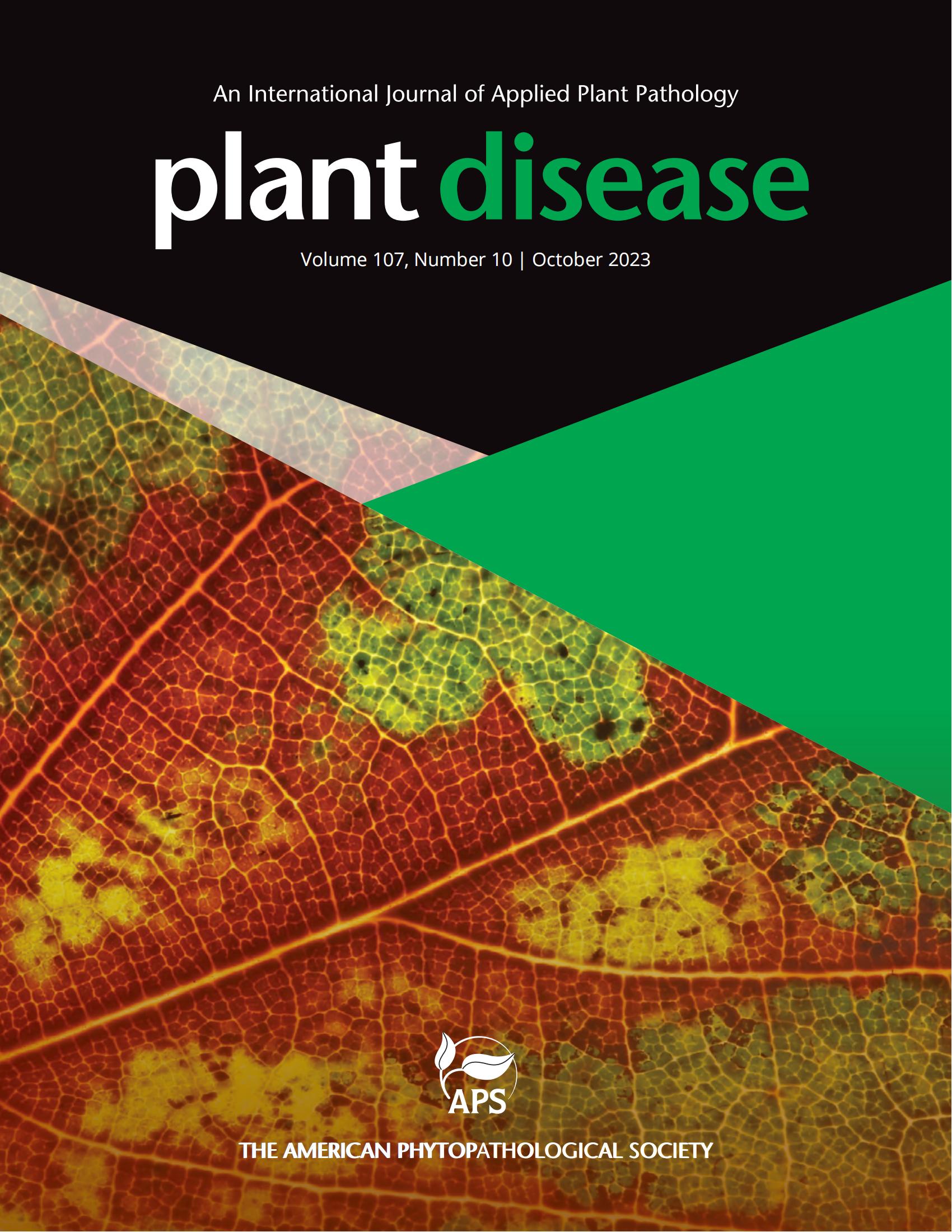求助PDF
{"title":"Cover Cropping Attenuates Population Growth of <i>Macrophomina phaseolina</i> by Limiting Weed Biomass, Despite Asymptomatic Colonization of Cover Crops.","authors":"Clara Qin, Polly H Goldman, Jim Leap, Peter Montgomery Henry","doi":"10.1094/PDIS-05-24-0951-RE","DOIUrl":null,"url":null,"abstract":"<p><p><i>Macrophomina phaseolina</i> is a fungus that causes charcoal rot in strawberry and a wide variety of crop species. Little is known about its potential to asymptomatically colonize crop plants or grow saprophytically on their tissues, both of which would create a potential for alternate, asymptomatic hosts to lead to increases in inoculum. To test the impact of cover cropping on <i>M. phaseolina</i> abundance, we conducted randomized-block field experiments in soils infested by <i>M. phaseolina</i>. None of the 15 cover crop varieties showed symptoms of charcoal rot. All Fabaceae and Brassicaceae varieties were asymptomatically colonized at varying rates, but among Poaceae <i>M. phaseolina</i> was recovered from only one individual oat plant. Soil samples collected at the time of planting, tillage, and 8 weeks after tillage showed that cover cropping attenuated the growth of <i>M. phaseolina</i> relative to fallow plots harboring the weedy legume <i>Medicago polymorpha</i>. This weed species was abundantly colonized by this pathogen in both living root samples and plant residue collected 8 weeks after tillage. Cover cropping also influenced the diversity and composition of bulk soil bacterial and fungal communities, but these effects were not associated with <i>M. phaseolina</i> population density. Although <i>M. phaseolina</i> was not detected in living wheat tissues, it was recovered from wheat residue, suggesting that it may be facultatively saprophytic. These results suggest that cover cropping does not pose a risk for increasing disease caused by <i>M. phaseolina</i> and could be beneficial as conducive weed species, such as <i>M. polymorpha</i>, are suppressed.[Formula: see text] Copyright © 2025 The Author(s). This is an open access article distributed under the CC BY-NC-ND 4.0 International license.</p>","PeriodicalId":20063,"journal":{"name":"Plant disease","volume":" ","pages":"PDIS05240951RE"},"PeriodicalIF":4.4000,"publicationDate":"2025-02-17","publicationTypes":"Journal Article","fieldsOfStudy":null,"isOpenAccess":false,"openAccessPdf":"","citationCount":"0","resultStr":null,"platform":"Semanticscholar","paperid":null,"PeriodicalName":"Plant disease","FirstCategoryId":"97","ListUrlMain":"https://doi.org/10.1094/PDIS-05-24-0951-RE","RegionNum":2,"RegionCategory":"农林科学","ArticlePicture":[],"TitleCN":null,"AbstractTextCN":null,"PMCID":null,"EPubDate":"","PubModel":"","JCR":"Q1","JCRName":"PLANT SCIENCES","Score":null,"Total":0}
引用次数: 0
引用
批量引用
Abstract
Macrophomina phaseolina is a fungus that causes charcoal rot in strawberry and a wide variety of crop species. Little is known about its potential to asymptomatically colonize crop plants or grow saprophytically on their tissues, both of which would create a potential for alternate, asymptomatic hosts to lead to increases in inoculum. To test the impact of cover cropping on M. phaseolina abundance, we conducted randomized-block field experiments in soils infested by M. phaseolina . None of the 15 cover crop varieties showed symptoms of charcoal rot. All Fabaceae and Brassicaceae varieties were asymptomatically colonized at varying rates, but among Poaceae M. phaseolina was recovered from only one individual oat plant. Soil samples collected at the time of planting, tillage, and 8 weeks after tillage showed that cover cropping attenuated the growth of M. phaseolina relative to fallow plots harboring the weedy legume Medicago polymorpha . This weed species was abundantly colonized by this pathogen in both living root samples and plant residue collected 8 weeks after tillage. Cover cropping also influenced the diversity and composition of bulk soil bacterial and fungal communities, but these effects were not associated with M. phaseolina population density. Although M. phaseolina was not detected in living wheat tissues, it was recovered from wheat residue, suggesting that it may be facultatively saprophytic. These results suggest that cover cropping does not pose a risk for increasing disease caused by M. phaseolina and could be beneficial as conducive weed species, such as M. polymorpha , are suppressed.[Formula: see text] Copyright © 2025 The Author(s). This is an open access article distributed under the CC BY-NC-ND 4.0 International license.
尽管杂草在覆盖作物上无症状定殖,但通过限制杂草生物量,覆盖耕作可减轻相思子巨霉菌的种群增长。
Macrophomina phaseolina 是一种真菌,可引起草莓和多种作物的炭腐病。人们对其在作物植株上无症状定殖或在作物组织上营养生长的潜力知之甚少,而这两种情况都有可能导致无症状宿主的交替出现,从而导致接种量的增加。为了测试覆盖种植对相思豆丰度的影响,我们在受相思豆侵染的土壤中进行了随机区块田间试验。15 个覆盖作物品种均未出现炭腐病症状。所有豆科和芸苔科作物都出现了不同程度的无症状定殖,但在诗歌科作物中,只从一株燕麦植株上发现了M.在播种、耕作和耕作后 8 周收集的土壤样本显示,与种植杂草豆科植物 Medicago polymorpha 的休耕地块相比,覆盖耕作可减轻 M. phaseolina 的生长。在耕作 8 周后采集的活根样本和植物残体中,这种杂草物种被病原体大量定殖。覆盖种植也影响了大体积土壤细菌和真菌群落的多样性和组成,但这些影响与相思豆的种群密度无关。虽然在小麦活体组织中未检测到相思豆菌,但却从小麦残留物中发现了相思豆菌,这表明相思豆菌可能具有表面吸食性。这些结果表明,覆盖种植不会造成相思豆菌引起的病害增加的风险,而且由于多角体相思豆菌等有利杂草物种被抑制,覆盖种植可能是有益的。
本文章由计算机程序翻译,如有差异,请以英文原文为准。


